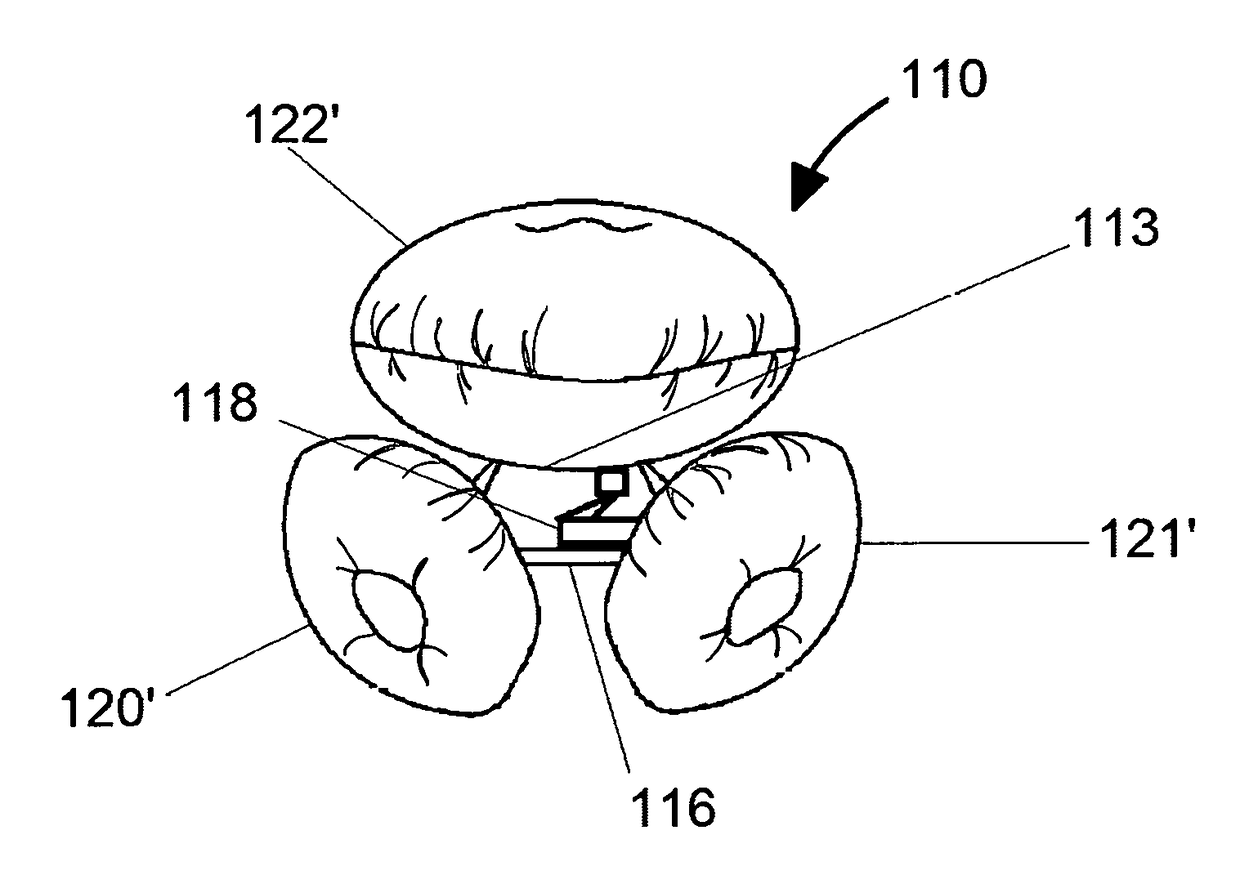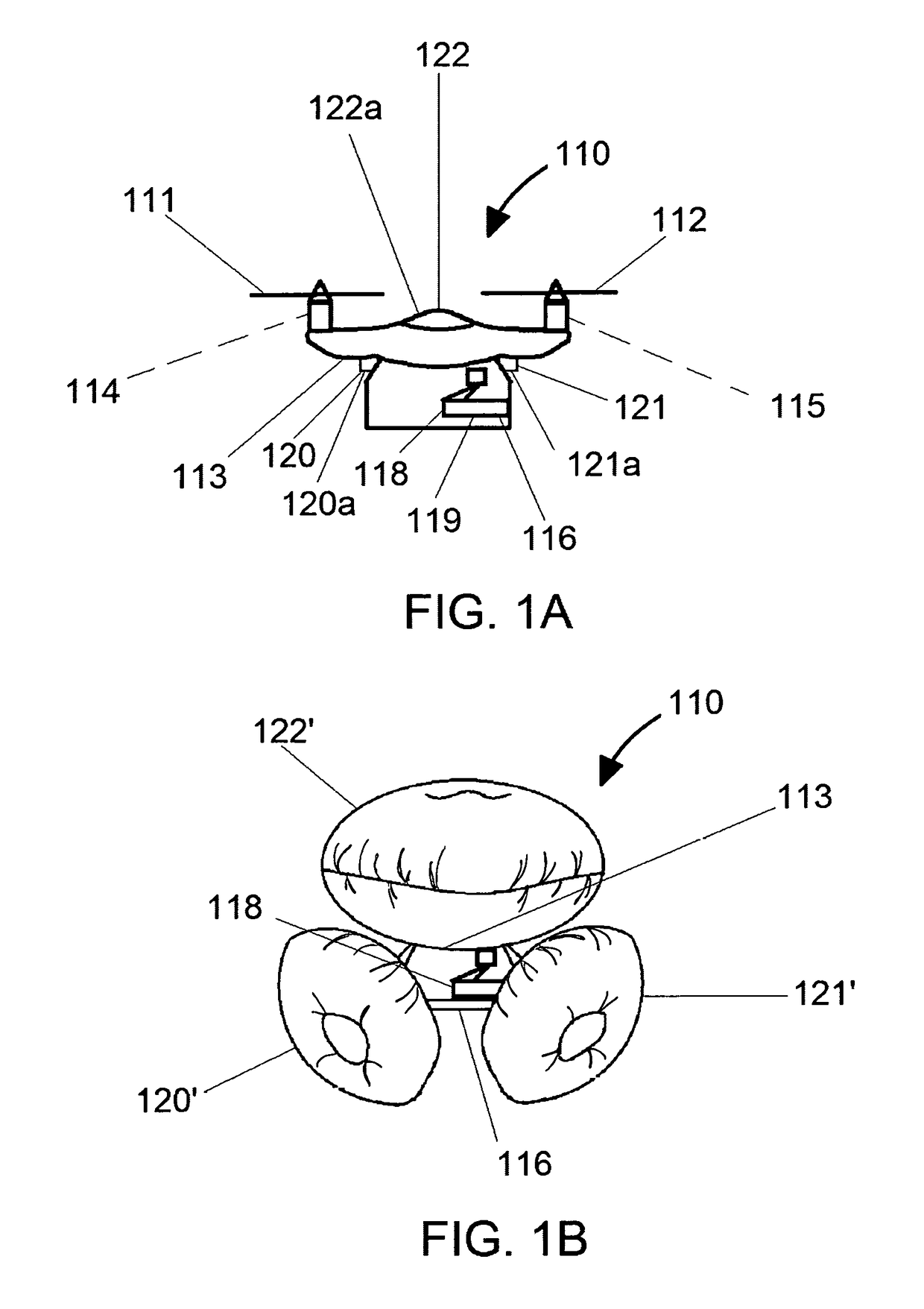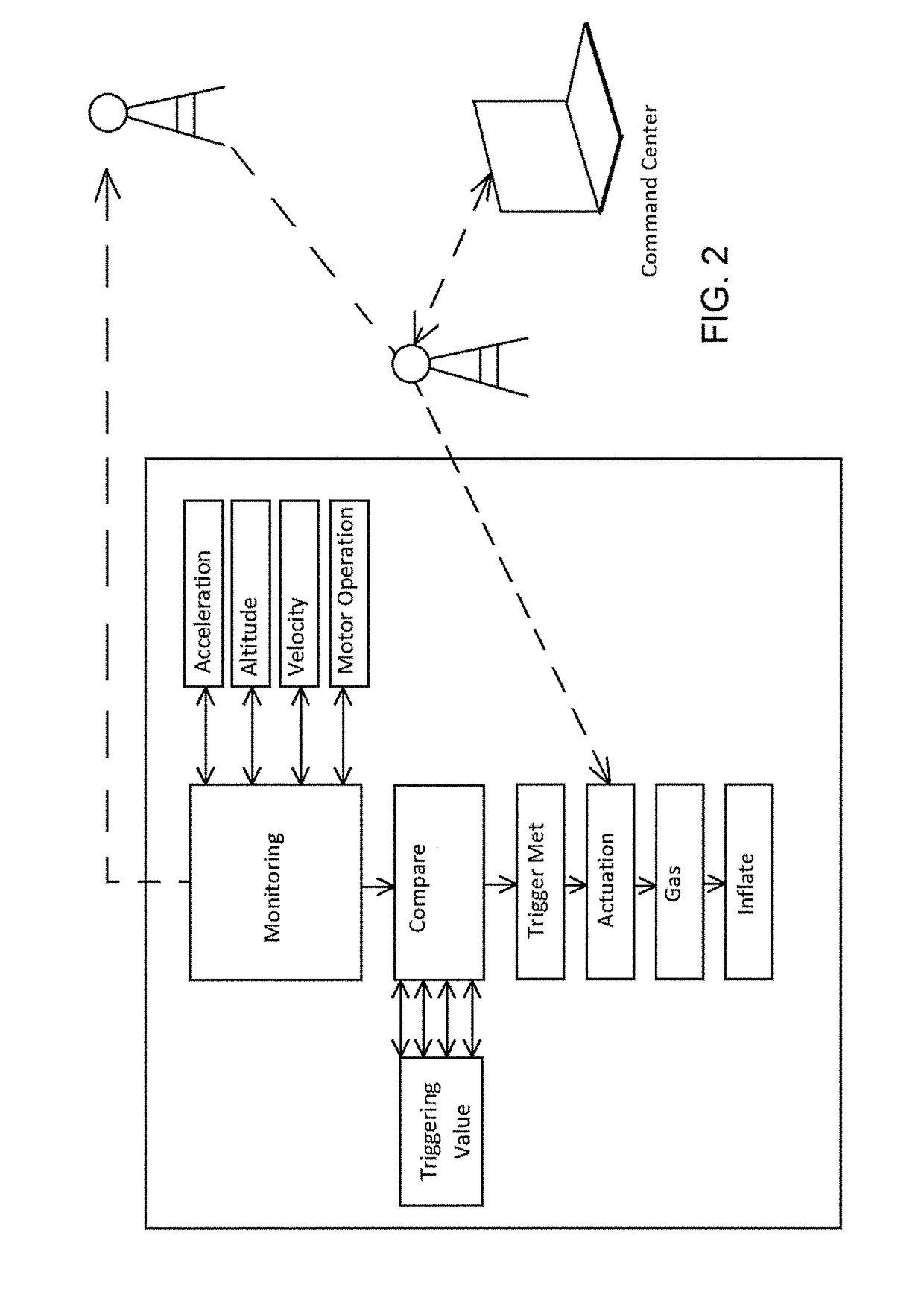Airbag system for use with unmanned aerial vehicles
a technology for airbags and unmanned aerial vehicles, applied in emergency apparatus, pedestrian/occupant safety arrangements, floating devices, etc., can solve problems such as affecting the safety of passengers, so as to reduce the risk of passengers falling off, reduce the impact, and reduce the impa
- Summary
- Abstract
- Description
- Claims
- Application Information
AI Technical Summary
Benefits of technology
Problems solved by technology
Method used
Image
Examples
Embodiment Construction
[0023]A safety system and unmanned aerial vehicles configured with a safety system are provided. Embodiments of the system and an unmanned aerial vehicle (UAV) implementing the system are illustrated in reference to FIGS. 1A and 1B, where the UAV 110 is shown. The UAV 110 illustrates an exemplary embodiment of an unmanned aerial vehicle implementing a safety system. The UAV 110 is depicted in an elevation view, configured as a quadcopter having four rotors 111,112 (the other two rotors being behind the rotors 111,112, and not shown). The vehicle 110 is shown having a housing 113 for housing the components therein. The rotors 111,112 are operably connected to motors 114,115, respectively, which regulate the speed of the rotors 111,112. Motors not shown also are provided to operate the rotors (not shown) which are situated immediately behind the rotors 111,112. The rotors, including those rotors 111,112 shown in FIGS. 1A and 1B, preferably are movably mounted, and are controllable to ...
PUM
 Login to View More
Login to View More Abstract
Description
Claims
Application Information
 Login to View More
Login to View More - R&D
- Intellectual Property
- Life Sciences
- Materials
- Tech Scout
- Unparalleled Data Quality
- Higher Quality Content
- 60% Fewer Hallucinations
Browse by: Latest US Patents, China's latest patents, Technical Efficacy Thesaurus, Application Domain, Technology Topic, Popular Technical Reports.
© 2025 PatSnap. All rights reserved.Legal|Privacy policy|Modern Slavery Act Transparency Statement|Sitemap|About US| Contact US: help@patsnap.com



